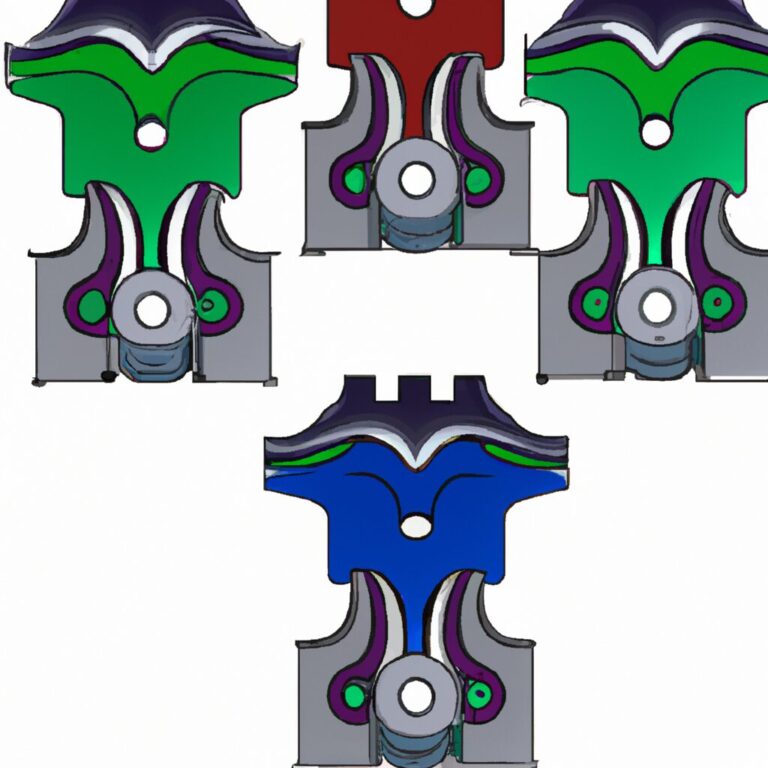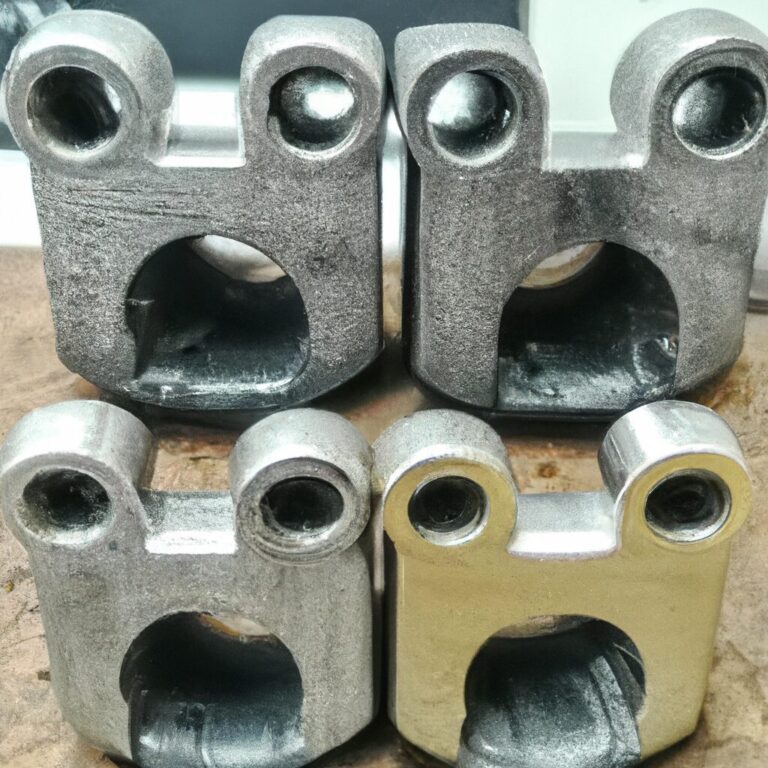is it safe to change a tire on an incline
Introduction
Changing a tire on an incline can be a tricky and dangerous task. It is important to take the necessary safety precautions to ensure that you are not putting yourself in harm’s way. In this article, we will discuss the safety considerations to keep in mind when changing a tire on an incline, as well as the steps you should take to ensure a safe and successful tire change.
How to Change a Tire on an Incline Safely
Changing a tire on an incline can be a tricky and dangerous task. To ensure that the process is done safely, it is important to follow the steps outlined below.
1. Park the car on a flat surface. If the car is on an incline, it is important to use wheel chocks to prevent the car from rolling.
2. Loosen the lug nuts on the flat tire. It is important to do this before jacking up the car, as it will be much harder to do so once the car is in the air.
3. Jack up the car. Place the jack on a flat, solid surface and make sure it is secure before raising the car.
4. Remove the flat tire. Once the car is jacked up, remove the lug nuts and take off the flat tire.
5. Put on the spare tire. Place the spare tire on the wheel and secure it with the lug nuts. Make sure the lug nuts are tightened securely.
6. Lower the car. Once the spare tire is in place, lower the car back to the ground.
7. Tighten the lug nuts. Once the car is back on the ground, tighten the lug nuts securely.
Following these steps will help ensure that changing a tire on an incline is done safely and correctly. It is important to take the necessary precautions to avoid any potential accidents or injuries.
What to Consider Before Changing a Tire on an Incline
When changing a tire on an incline, there are several important considerations to keep in mind. First, it is important to ensure that the vehicle is in park and the parking brake is engaged. This will help to prevent the vehicle from rolling while the tire is being changed.
Second, it is important to use wheel chocks to secure the vehicle. Wheel chocks are blocks of wood or metal that are placed behind the wheels of the vehicle to prevent it from rolling. This is especially important when changing a tire on an incline, as the vehicle may be more likely to roll due to the incline.
Third, it is important to ensure that the lug nuts are properly tightened. Lug nuts should be tightened in a star pattern, starting with the top lug nut and working your way around the wheel. This will ensure that the wheel is properly secured and will not come loose while the vehicle is in motion.
Finally, it is important to be aware of your surroundings. When changing a tire on an incline, it is important to be aware of any potential hazards, such as traffic or other vehicles. It is also important to be aware of any potential obstacles, such as rocks or other debris, that may be in the way.
By following these tips, you can ensure that you are safely and properly changing a tire on an incline.
Tips for Changing a Tire on an Incline
1. Park your vehicle on a flat surface, if possible. If you are unable to find a flat surface, park your vehicle as close to the side of the road as possible and make sure the parking brake is engaged.
2. Place wheel wedges or blocks behind the wheels that are not being changed. This will help to prevent the vehicle from rolling while you are changing the tire.
3. Loosen the lug nuts on the wheel that needs to be changed. Do not remove them completely.
4. Place the jack under the vehicle and raise it until it is supporting the weight of the vehicle. Make sure the jack is placed on a solid surface and is not on an incline.
5. Remove the lug nuts and take off the wheel.
6. Place the spare tire on the wheel hub and replace the lug nuts. Make sure the lug nuts are tightened securely.
7. Lower the jack and remove it from under the vehicle.
8. Tighten the lug nuts with a lug wrench.
9. Lower the vehicle to the ground and check that the lug nuts are tightened securely.
10. Place the flat tire and the lug nuts in the trunk of the vehicle.
Common Mistakes to Avoid When Changing a Tire on an Incline
Changing a tire on an incline can be a tricky task, and it is important to take the necessary precautions to ensure that the job is done safely and correctly. Here are some common mistakes to avoid when changing a tire on an incline:
1. Not using wheel chocks: Wheel chocks are essential when changing a tire on an incline. They help to prevent the vehicle from rolling while the tire is being changed. Make sure to place the chocks on both sides of the wheel that is being changed.
2. Not using the parking brake: When changing a tire on an incline, it is important to engage the parking brake to ensure that the vehicle does not roll. Make sure to engage the parking brake before beginning the tire change.
3. Not using a jack stand: A jack stand is an important safety device when changing a tire on an incline. It helps to support the vehicle while the tire is being changed. Make sure to use a jack stand when changing a tire on an incline.
4. Not using the correct jack: It is important to use the correct jack when changing a tire on an incline. Make sure to use a jack that is designed for the type of vehicle you are working on.
5. Not using gloves: Gloves are essential when changing a tire on an incline. They help to protect your hands from dirt and debris, as well as from the sharp edges of the tire. Make sure to wear gloves when changing a tire on an incline.
By following these tips, you can ensure that you are changing a tire on an incline safely and correctly.
The Benefits of Changing a Tire on an Incline
Changing a tire on an incline can be a daunting task, but it is important to know how to do it in case of an emergency. There are several benefits to changing a tire on an incline, including improved safety, increased stability, and better leverage.
Safety is the most important benefit of changing a tire on an incline. When a tire is changed on a flat surface, the car can roll away if the parking brake is not engaged. On an incline, the car is more likely to stay in place, reducing the risk of injury or damage. Additionally, the incline can provide additional support for the car, making it easier to lift the car and remove the tire.
Stability is another benefit of changing a tire on an incline. When a tire is changed on a flat surface, the car can move around, making it difficult to get the tire off and on. On an incline, the car is more likely to stay in place, making it easier to work on the tire.
Finally, changing a tire on an incline can provide better leverage. When a tire is changed on a flat surface, it can be difficult to get the tire off and on. On an incline, the car is more likely to stay in place, making it easier to get the tire off and on. Additionally, the incline can provide additional support for the car, making it easier to lift the car and remove the tire.
In conclusion, changing a tire on an incline can provide several benefits, including improved safety, increased stability, and better leverage. Knowing how to change a tire on an incline can be a valuable skill in case of an emergency.
The Risks of Changing a Tire on an Incline
Changing a tire on an incline can be a dangerous task if not done properly. It is important to take the necessary precautions to ensure the safety of yourself and others.
When changing a tire on an incline, the first step is to make sure the vehicle is in park and the parking brake is engaged. This will help to prevent the vehicle from rolling while the tire is being changed. It is also important to make sure the vehicle is on level ground. If the ground is not level, it is best to use a jack stand to support the vehicle.
Once the vehicle is secure, the next step is to loosen the lug nuts on the wheel. This should be done before jacking up the vehicle. It is important to use the correct size wrench to loosen the lug nuts. If the lug nuts are too tight, it is best to use a breaker bar to loosen them.
Once the lug nuts are loose, the vehicle can be jacked up. It is important to use a jack that is designed for the make and model of the vehicle. The jack should be placed on a flat, level surface and should be positioned correctly under the vehicle. It is important to make sure the jack is secure before raising the vehicle.
Once the vehicle is raised, the flat tire can be removed and the new tire can be installed. It is important to make sure the lug nuts are tightened securely. It is also important to lower the vehicle slowly and to make sure the jack is removed before driving away.
Changing a tire on an incline can be a dangerous task if not done properly. It is important to take the necessary precautions to ensure the safety of yourself and others. By following the steps outlined above, you can help to ensure a safe and successful tire change.
How to Prepare for Changing a Tire on an Incline
Changing a tire on an incline can be a daunting task, but with the right preparation and knowledge, it can be done safely and efficiently. Here are some tips to help you prepare for changing a tire on an incline.
1. Make sure you have the right tools. You will need a jack, a lug wrench, and a spare tire. Make sure the jack is rated for the weight of your vehicle and that the lug wrench fits the lug nuts on your vehicle.
2. Make sure the area is safe. Look for any debris or obstacles that could cause you to slip or trip. Make sure the ground is level and stable.
3. Park the vehicle on the incline. Make sure the vehicle is in park and the parking brake is engaged. Place wheel chocks behind the wheels on the opposite side of the incline to prevent the vehicle from rolling.
4. Loosen the lug nuts. Use the lug wrench to loosen the lug nuts, but do not remove them.
5. Jack up the vehicle. Place the jack under the frame of the vehicle and raise it until the tire is off the ground.
6. Remove the lug nuts and the tire. Once the tire is off the ground, remove the lug nuts and the tire.
7. Install the spare tire. Place the spare tire on the wheel and replace the lug nuts.
8. Lower the vehicle. Lower the vehicle until the tire is firmly on the ground.
9. Tighten the lug nuts. Use the lug wrench to tighten the lug nuts.
10. Remove the jack and wheel chocks. Once the lug nuts are tightened, remove the jack and wheel chocks.
By following these steps, you can safely and efficiently change a tire on an incline.
The Best Tools for Changing a Tire on an Incline
Changing a tire on an incline can be a difficult and dangerous task. To ensure that the job is done safely and efficiently, it is important to have the right tools. Here are some of the best tools for changing a tire on an incline:
1. Jack: A jack is an essential tool for changing a tire on an incline. It is used to lift the car off the ground so that the tire can be removed and replaced. Make sure to use a jack that is rated for the weight of your vehicle.
2. Wheel Chocks: Wheel chocks are blocks of wood or metal that are placed behind the wheels of the car to prevent it from rolling while the tire is being changed.
3. Lug Wrench: A lug wrench is a tool used to loosen and tighten the lug nuts that hold the wheel in place. Make sure to use a lug wrench that is the correct size for your vehicle.
4. Tire Iron: A tire iron is a tool used to remove and replace the tire. Make sure to use a tire iron that is the correct size for your vehicle.
5. Gloves: Gloves are important for protecting your hands while changing a tire on an incline. Make sure to use gloves that are thick enough to protect your hands from the sharp edges of the tire and wheel.
By using the right tools, you can ensure that changing a tire on an incline is done safely and efficiently. Make sure to always use the correct tools for the job and to follow all safety precautions.
Q&A
1. Is it safe to change a tire on an incline?
Yes, it is safe to change a tire on an incline, but it is important to take extra precautions to ensure your safety. Make sure the vehicle is securely parked and the parking brake is engaged. Place wheel chocks behind the tires to prevent the vehicle from rolling. If possible, use a jack stand to support the vehicle. Wear protective gloves and eyewear to protect yourself from debris. Finally, make sure you have the correct tools and supplies to complete the job.
Conclusion
In conclusion, it is generally safe to change a tire on an incline, as long as you take the necessary precautions. Make sure to use wheel chocks to secure the vehicle, and use a jack that is rated for the weight of the vehicle. Additionally, be sure to use the correct tools and follow the manufacturer’s instructions for changing the tire. With the right safety measures in place, you can safely change a tire on an incline.



